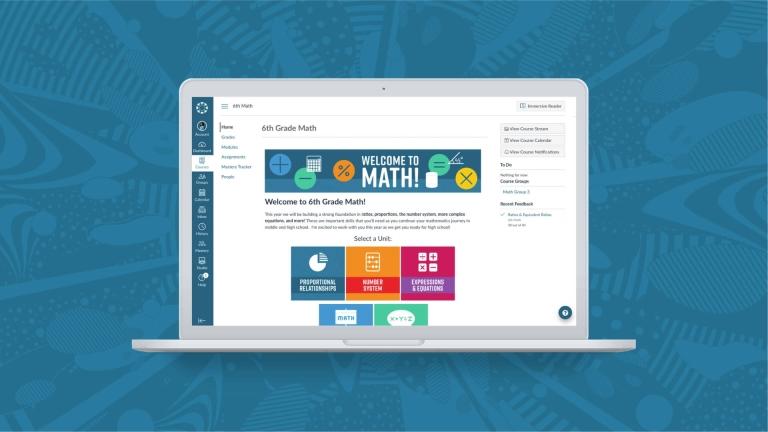
In many school districts, it can feel like the technology and teaching and learning are disconnected.
Oftentimes, this disconnect isn’t intentional. A natural result of differing professional backgrounds and organizational structures, as well as heavy workloads, contributes to these divides. Districts shouldn’t be ashamed or scared if they notice these divides in their faculty; however, after the divide is noticed, it’s important to start taking action to bring your people together.
Bridging this divide is crucial for making student-centered technology decisions that enhance learning outcomes.
The Hidden Barrier in Edtech
It may go without saying, but teaching professionals typically emerge from classroom experience, while technology teams often come from technical or corporate backgrounds. These distinct perspectives influence how each group approaches edtech tools and processes surrounding them. For example, educators prioritize user-friendliness and pedagogical alignment, while IT teams tend to focus on security, scalability, and cost-effectiveness.
Teachers also master what will and won’t work in the classroom. They can significantly influence staff to adopt new tools as they’re purchased. IT teams understand the ins and outs of what boxes tools need to check to keep schools secure.
These diverging priorities can result in fragmented decision-making, where tools may excel in one area but fail to meet the district’s overall needs.
However, both perspectives are essential in creating a truly robust edtech ecosystem.
Misalignment can lead to:
- underused technology
- frustrated faculty
- missed opportunities to improve student learning
The good news is that with intentional strategies, districts can foster collaboration and align these critical teams so that more students can benefit from the best tools available.
Four Strategies to Build Cross-Departmental Collaboration
1. Transparent Work Streams
Creating transparency between departments is an essential first step. Encourage teaching and technology teams to share their top goals, progress, and challenges through regular presentations or shared workspaces. For instance, teaching teams could demonstrate how they use specific tools in the classroom, while IT teams could outline their processes for evaluating and implementing new software.
These exchanges help demystify each group’s work and reveal common objectives. By making departmental efforts visible, districts can identify areas of overlap and foster mutual respect.
2. Mutual Understanding
Knowledge sharing is key to building empathy between teams. Facilitate opportunities for staff to learn about each other’s day-to-day experiences. For example, technology teams could observe classrooms to see how tools are used in real-time, while educators might attend trainings on technical considerations like data privacy or network security.
Moving beyond technical jargon and operational constraints helps both groups see the bigger picture: supporting students. When teams develop a deeper appreciation for each other’s challenges, collaboration becomes more natural.
3. Identify Shared Priorities
District leaders can bridge gaps by focusing on shared priorities. Begin by asking, “What do we want to achieve for our students?” Identifying mutual goals, such as improving student engagement or streamlining assessment processes, ensures that all stakeholders are working toward the same outcomes.
Once these priorities are established, use them as a guidepost for evaluating technology investments. If a proposed tool aligns with both instructional and technical goals, it’s likely to gain broader support and see more effective implementation.
4. Consensus Building
Collaborative decision-making doesn’t happen by accident; it requires structure. Establish cross-departmental committees or working groups to evaluate technology needs and solutions. Ensure these groups represent diverse perspectives, including teachers, IT staff, administrators, and even students where appropriate.
Provide a clear framework for discussions, focusing on evidence-based evaluations and student-centered outcomes. By creating intentional spaces for collaboration, districts can reduce the risk of unilateral decisions and ensure buy-in from all stakeholders.
Why Empathy Matters More Than Technology
Ultimately, the success of educational technology lies not in the tools themselves but in the relationships and understanding between the people who implement them. Fostering a culture of empathy, listening, and transparency enables districts to make more informed, holistic decisions.
When teaching and technology teams work together effectively, the result is not just better tools but also a stronger foundation for student success. By breaking down silos, districts can transform fragmented decision-making into a collaborative effort that prioritizes learning outcomes.
Effective educational technology isn’t just about selecting the right tools. It’s about bringing the right people together, understanding each other’s perspectives, and focusing on student outcomes. By fostering collaboration between teaching and technology teams, districts can create a cohesive approach to edtech that truly supports students.
Want to dive deeper into collaborative technology decision-making? Download Building Efficient Edtech Ecosystems eBook now.
Related Content
 Teaching-With-Tech-10-Benefits.jpg
Teaching-With-Tech-10-Benefits.jpgBlogs
 cidilabs.png
cidilabs.pngBlogs
 canvas_x_tg_logo_lockup_780_x_520.png
canvas_x_tg_logo_lockup_780_x_520.pngBlogs
